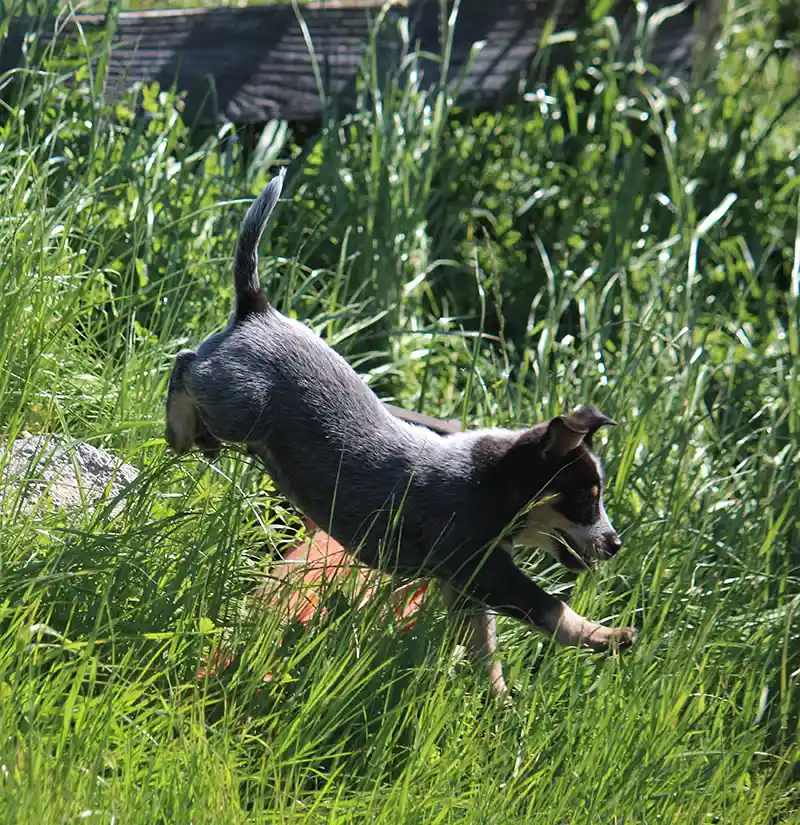Best Food for Blue Heelers
Blue Heelers, also known as Australian Cattle Dogs, are intelligent, active, and loyal companions. To keep them healthy, happy, and full of energy, it’s crucial to provide them with the best dog food for Blue Heelers and a well-balanced diet.
In this blog post, we’ll explore the dietary needs of Mini Blue Heeler dogs and offer tips on how to create a nutrition plan to keep your furry friend in top shape.



Understanding the Blue Heeler’s Nutritional Needs
Blue Heelers are known for their agility, herding abilities, and boundless energy. To maintain their vitality, you must meet their specific nutritional requirements
High-Quality Protein
Blue Heelers need a diet rich in high-quality animal-based protein from the time they are puppies. Look for dog food that lists a meat source, such as chicken, beef, or fish, as the primary ingredient.
Balanced Macronutrients
A well-balanced diet for Blue Heelers should consist of 20-30% protein, 10-15% fat, and 50-60% carbohydrates. The exact ratios may vary based on your dog’s age, activity level, and overall health.
Essential Fatty Acids
Fats are essential for your Blue Heeler’s skin, coat, and overall health. Look for dog food that contains healthy fats like omega-3 and omega-6 fatty acids, often sourced from fish or flaxseed.
Fiber and Carbohydrates
Blue Heelers can benefit from a moderate amount of carbohydrates and fiber for sustained energy. Choose dog food that includes complex carbohydrates like sweet potatoes, peas, and brown rice.
Fresh Fruits and Vegetables
Incorporate fresh fruits and vegetables into your Blue Heeler’s diet. These provide essential vitamins, minerals, and antioxidants. Be cautious with grapes, raisins, and foods toxic to dogs.
Avoid Fillers
Stay away from dog foods filled with fillers like corn, wheat, and soy, which can lead to allergies and digestive issues.
Feeding Guidelines for Blue Heelers
Puppy Diet: Blue Heeler puppies require a diet higher in protein and calories to support their growth and energy needs. Choose puppy-specific food until they’re about 12-18 months old.
Adult Diet: Transition to adult dog food when your Blue Heeler reaches maturity. Adjust portion sizes according to their activity level and body condition.
Senior Diet: As your dog ages, they may require a diet tailored to their changing nutritional needs, including joint support and lower calorie content.


Additional Tips
- Always provide fresh, clean water
- Be mindful of portion control to prevent overfeeding
- Regularly monitor your Blue Heeler’s weight and adjust their diet as needed
- Incorporate occasional treats and fruits, but do so in moderation
Homemade Diet vs. Commercial Dog Food
While some pet owners prefer preparing homemade meals for their Blue Heelers, it’s important to consult with a veterinarian or a canine nutritionist to ensure you’re providing the best dog food for Blue Heelers. Commercial dog food is formulated to provide balanced nutrition, making it a convenient and reliable option.
Summary
Maintaining a healthy diet is a cornerstone of caring for your Blue Heeler. By understanding their nutritional needs and choosing the best dog food for Blue Heelers, you can ensure that your loyal companion stays active, happy, and thriving. Remember, every dog is unique, so consult with your veterinarian to create a diet plan tailored to your Blue Heeler’s specific needs and lifestyle.

